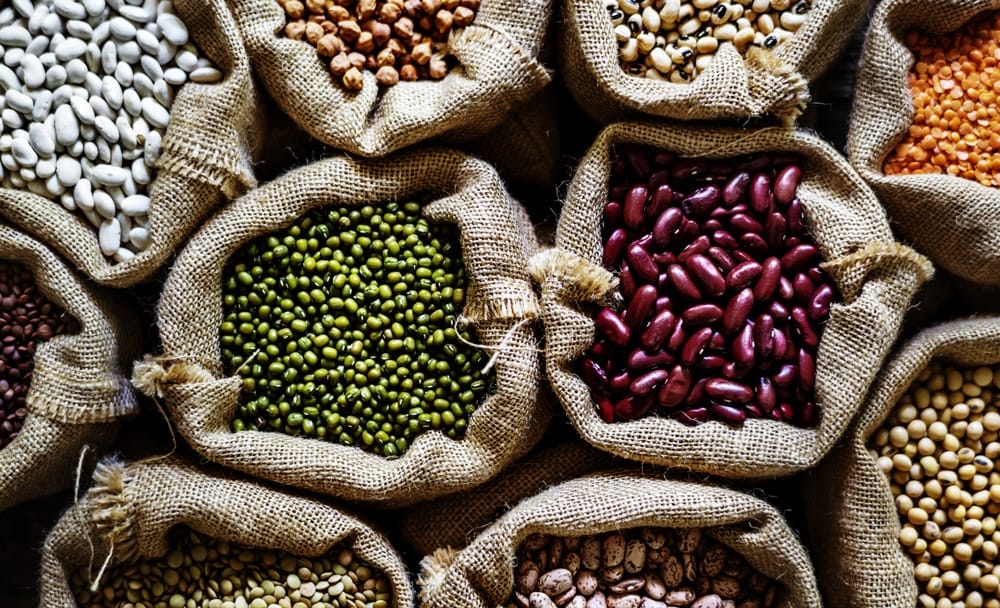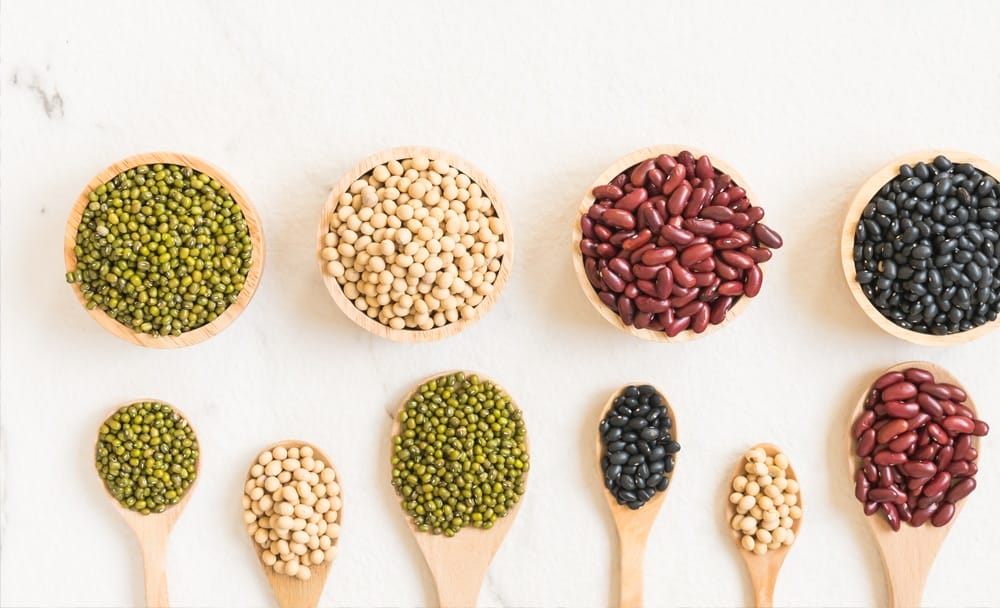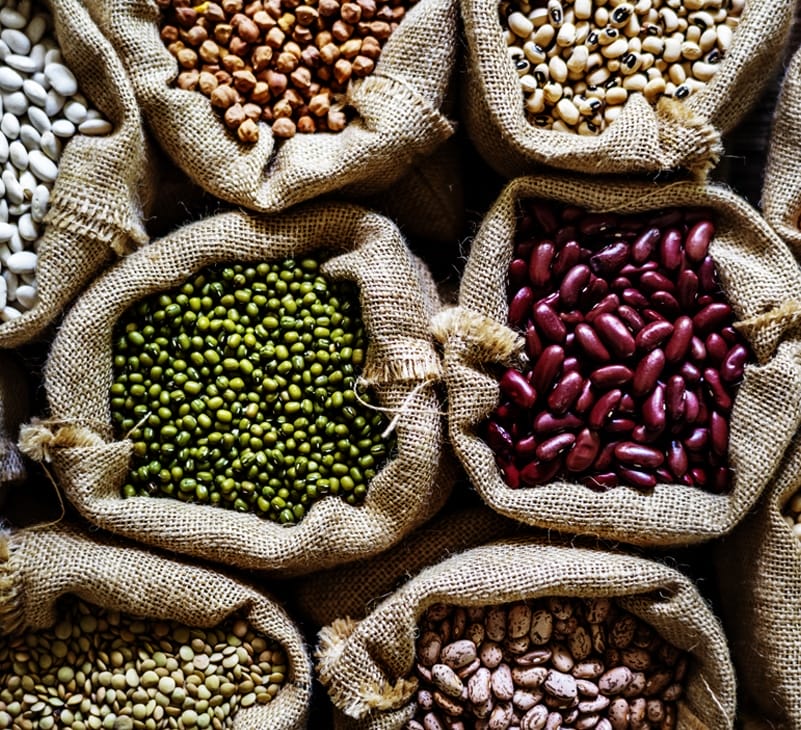
A commonly asked question is, “what is the meaning of legumes?”
Legumes include all forms of peas and beans from the botanical family of Fabaceae or Leguminosae. There exist thousands of diverse species of legume plants, but those that are edible are limited.
The family of legumes also includes pulses, which are essentially the dried seeds of legumes. Popular dried legumes include chickpeas, lentils, peas, lupins, and beans (such as red kidney beans, butter beans, haricot or navy beans, adzuki beans, cannellini beans, soybeans, and black-eyed beans).
Legumes are available in a wide range of shapes, colours, and sizes and can be cooked and consumed in different forms, including split, grounded into flours or dried, cooked or frozen whole legumes, or even canned ones.
Health Benefits Of Legumes
You may be surprised to know how nutritious legumes are. They are an excellent source of fibre, protein, B vitamins, carbohydrates, copper, iron, manganese, magnesium, phosphorus, and zinc.
Legumes are low in fat content, are practically free of saturated fats, and because they are all plant foods, they are free of cholesterol.
One serving of legumes (half a cup) provides approximately 115 calories, 20 grams of carbs, 7-9 grams of fibre, 8 grams of protein, and 1 gram of fat. Moreover, legumes have a low glycaemic index, which ranges between 10 and 40.
Type 2 Diabetes
A diet rich in plant-based foods (such as legumes) and low in refined grains, sugar, and processed meats is known to lower the risk of developing type 2 diabetes. What’s more, such a diet improves both glycaemic and lipid control. In one study, where individuals had an intake of legumes (1cup/day) or wheat-fibre foods, it was observed that those who were on a low-glycaemic-Index legumes diet showed a significant decrease in total cholesterol as well as triglyceride levels and a decrease in both systolic and diastolic blood pressure in comparison with those who had an intake of wheat-fibre foods.
Hyperlipidaemia
Regular consumption of legumes may help in lowering total and LDL (low-density lipoprotein) or bad cholesterol. Researchers have also seen significant improvements when it comes to levels of triglycerides as well as in insulin and fasting- blood-sugar levels.
Hypertension
When it comes to legumes benefits, they are a rich source of fibre, potassium, and magnesium, all of which are essential nutrients that are known to have positive impacts on management of blood pressure. In one study, wherein subjects who consumed slightly less than one cup of legumes every day for ten weeks, both systolic as well as mean arterial blood pressure were decreased significantly. In another study, 113 subjects (who were all obese) consumed 2 servings of legumes and 4 servings of whole grains each day for 18 months, effectively replacing refined-carbohydrate foods. It was observed that there was significant reduction in blood pressure, triglycerides, waist circumference, and overall weight.
Weight Management
A diet that includes regular consumption of legumes may help in controlling weight in individuals. The protein, fibre, and slowly digested carbs, which are found in legumes, may help in attaining satiety. According to data from the National Health and Nutrition Examination Survey (NHANES), it was noted that those who consumed legumes had lower body weights in comparison with those who did not consume legumes. Consumers of legumes are additionally much less likely to be obese in comparison with non-consumers.
Popularity Of Legumes In India

India is predominantly a vegetarian country; hence legumes in India have a special place. Indians savour pulses and cereals of many hues and colours. They are consumed not only in liquid form with tadkas and spices, but also added to prepare rotis, pooris, dumplings, and even tikkis.
Legumes are used as the primary ingredient in a humungous range of Indian recipes, making them truly wholesome to be savoured with a wide range of accompaniments.
Ayurveda (the science of life), too, advocates the incorporation of legumes in everyday diet. This is because on Indian meal can claim to be complete without dal or lentils, which is a staple in Indian diets.
On A Final Note
Legumes include all peas and beans from the Leguminosae family. Some of the most popular legumes include peanuts, soybeans, kidney beans, chickpeas, Bengal gram, black gram, lobia, moth beans, mung beans, green gram, and red gram. Legumes offer a wide range of health benefits such as preventing and managing type 2 diabetes, managing high blood pressure, preventing obesity, and helping in reducing weight.
























